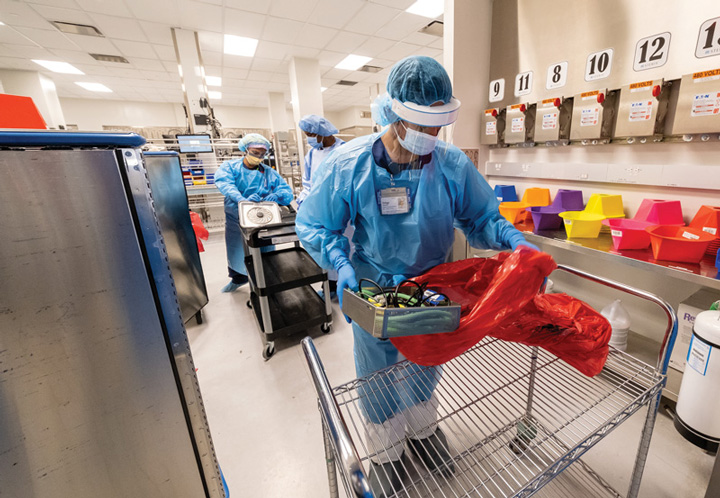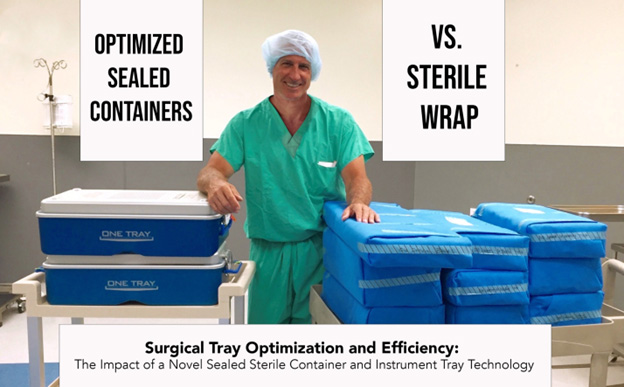At Virtua Health, even the skeptics and the worriers came around to the idea.
 Northwell Health
Northwell HealthUNNECESSARY EFFORT Every day, your busy sterile processing techs could be reprocessing numerous instruments that weren’t actually used in your ORs.
The shared governance team at Virtua Health in Voorhees, N.J., identified a big opportunity to improve efficiency and reduce costs by streamlining surgical instrument sets. It observed too many trays containing rarely used instrumentation, and decided its most commonly used instrument sets could benefit from a well-considered pruning.
"Our staff had a big push to try and make our whole department a little bit more efficient and just make our workday a little bit easier," says shared governance team member and staff nurse David Meyer, BSN, RN, CNOR. "We started about three years ago by reorganizing our core, moving supplies we most often use closest to where we use them, not to where they just happened to be 10 years ago and that's just where they were. That really changed the mindset of the department, and we then looked at our workflows to see if we could reduce the time patients spent in the OR to save money.
"Then we started to really look at our instruments: ‘Do we really need all of these retractors? Why do we still have these forceps that a doctor who long since retired used? Let's pull them out of our sets because we don't use them for most surgeries anymore, and we can have them available.’ That way, it's easier setup, less for sterile processing to reprocess every time, less wear and tear on the instruments so we don't need to replace them as much."
The team created a list of its instrument sets, and over five months collaborated with surgeons of various specialties to break them down and collectively determine which instruments in various trays were unnecessary. "We asked, ‘Do you really need all of this, or that?’" says Mr. Meyer. "Most of the time, if there were, say, 12 of a certain instrument, they’d say ‘I'm okay only using eight.’"
After this worthwhile exercise, the team worked with central sterile supply to create new instrument sets, which were trialed by all surgical staff and discussed at staff meetings over another two months. Both staff and surgeons were empowered to provide feedback and make suggestions.
The team ended up reducing instrument counts in its general laparoscopic, abdominal open surgery and minor vaginal trays, as well as several breast trays. Now, for example, most general laparoscopic surgeries require only one instrument tray as opposed to two.
Importantly for the success of the project, all of the removed instruments are now sterilized and stored separately, always available for quick retrieval when needed. Mr. Meyer says this was the biggest obstacle his team encountered: changing the "just in case" mindset of staff and surgeons.
"We needed them to move out of their comfort zone and realize this is going to be easier," he says. "What surprised us was how quickly the people who were hesitant accepted it, like some of our more veteran nurses who’d always done things a certain way. Some surgeons were hesitant: ‘Make sure I have all of my instruments, make sure I have all of my special retractors.’
"We explained that you're still going to have them right here in the room, they’re just not going to be open on the field. You may have to wait an extra 15 or 20 seconds. It's wrapped, it's sterile, it's just not opened, and when you need it, it's right here."
The result of the project, says the team, is a system that is more effective for Virtua patients, staff and surgeons alike. Resulting cost savings are well into five figures, says Mr. Meyer, due to reduced reprocessing and instrument replacements, along with quicker setups and breakdowns in the OR and less staff fatigue.
.svg?sfvrsn=be606e78_3)



.svg?sfvrsn=56b2f850_5)